UCL IOE Biodiversity Garden Competition winners announced
14 May 2015
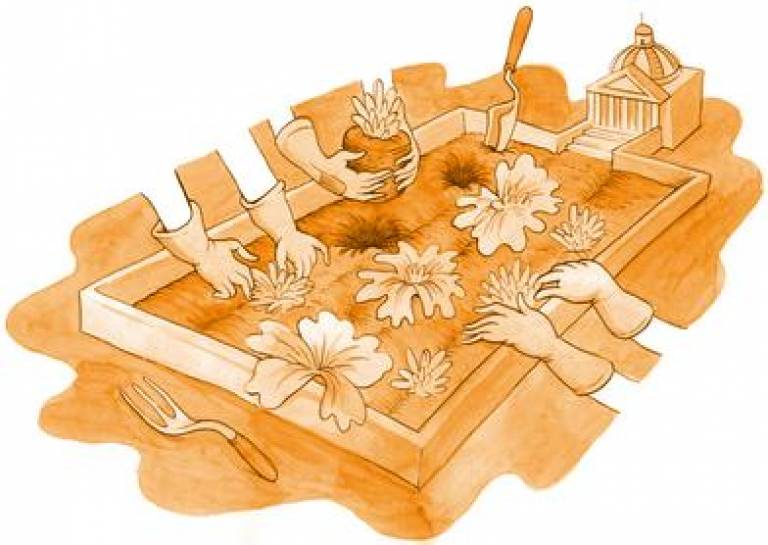
The UCL Institute of Education gardens provide a haven for wildlife (and UCL staff and students), on the roof of the UCL Institute of Education. And for the past month, members of the UCL community have been given the opportunity to submit their designs for one of four biodiversity-supporting raised beds in the gardens.
We're now pleased to announce the winners of this competition. These winners will be provided with funds and support to create their gardens in 'Sarah's Garden' on the IoE building. This space is dedicated to the memory of Sarah Douglas who was General Manager of the IOE Students' Union (2006-2012).
Find out more about the UCL IOE Gardens.
Improving biodiversity is an important element of sustainability, but a challenging one for an organisation in a dense urban environment. These brilliant submissions show the potential for simple, low-cost interventions to support local wildlife and provide new amenities for UCL students and staff
Richard Jackson - Director, Sustainability
The four winning entries
1. Laura Dempsey: A Biodiversity Apothecary
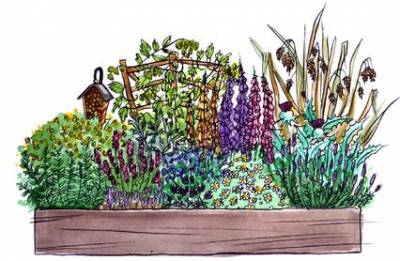
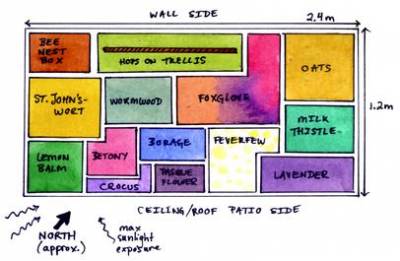
Laura is a PhD student in the department of Medical Physics and Biomedical Engineering. She designed her garden to remind visitors of the history of botanical medicine and the crucial role that plants have held (and still hold) in developing medicines. She aims to create a small space at UCL similar to that a traditional apothecary would have used, which can serve as an educational tool and place of relaxation for staff and students.
For every species planted in the space, Laura plans to create a plaque that details its history and how it was traditionally used. To help support biodiversity, she'll use plants that are also an abundant source of nectar and pollen, and construct a bee nest box at the UCL Institute of Making to encourage solitary bees to live in and pollinate the gardens. Finally, Laura plans to create a handmade book of botanical drawings of the garden to help engage a wider audience with the power of plants.
We were really impressed with Laura's plan to create a garden to not only boost biodiversity, but also to emphasise its vital importance in other areas of life. Gardening isn't just good for biodiversity, it can also improve health and wellbeing, and Laura's garden shows this.
2. Charlotte Collins: A Multi-Sensory Raised Bed
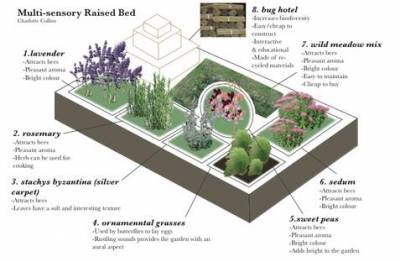
Geography student Charlotte designed a raised bed which incorporates a variety of plants and flowers, all offering unique scents, textures and colours.
She plans to plant ornamental grasses to provide the perfect environment for butterflies and other insects to lay their eggs, whilst using heavily scented flowering plants, such as lavender to attract bees. Whilst some of the flowers will only blossom in certain seasons, she hopes that the addition of more robust species would allow the garden to flourish all year round.
In addition to the plants, she will include a small ‘bug hotel’ made from recycled materials such as bamboo canes and bricks to provide a safe nesting environment for insects.
We especially liked Charlotte's emphasis on visitor interaction with the garden, whether this was through visual elements, touching and smelling the plants or encouraging visitors to take cuttings.
3. Rachel Euba and Belinda Fullelove: wild flower garden
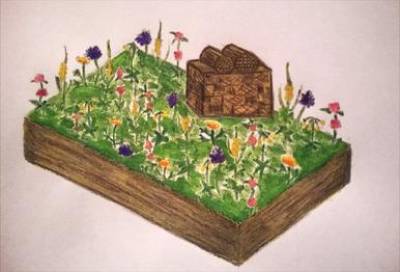
Belinda and Rachel are staff Green Champions at UCL. For their design, they proposed a resilient and low-maintenance wild flower garden as a raised bed.
Their aim is to provide a rich source of pollen and food to insects, bees and butterflies for much of the year through planting, but also through the introduction of a 'bug hotel' using materials recycled from UCL construction projects.
The wild flowers that they've chosen are attractive to butterflies, bees, hover flies and soil invertebrates, which in turn create a meal for local birdlife, such as robins, wagtails and tits.
We really liked Rachel and Belinda's simple yet effective design. Its low-cost, low-maintenance approach could provide valuable insights into how biodiversity can be encouraged in hard-to-reach spaces like roofs.
4. Alison Fairbrass, Laura Nunes, Roee Moar, Jo Ferguson, Mathew Bell, Prof Kate Jones: Biobox
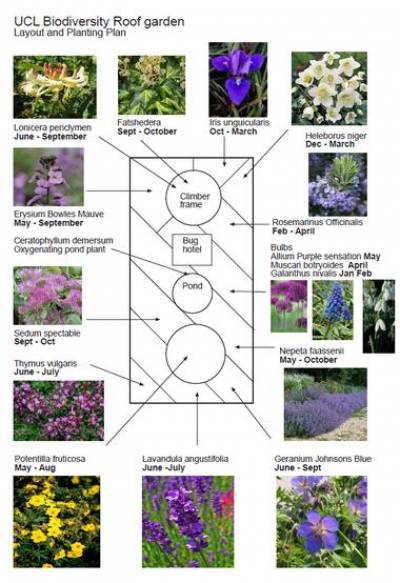
Designed by a group of biodiversity scientists, bat scientists and ecological landscape designers, 'BioBox' is a concept for the garden guided by an aim to pack as much biodiversity potential into the space as possible.
By creating a variety of different micro-habitats within the space, the team aim to provide a living and feeding space for a highly diverse community of species within the plot. Their design starts from the ground up, maximising the potential for biodiversity by mixing the existing substrate with different aggregate materials. Recycled materials such as broken bricks and pots, rubble and stones will be used.
Not only will these different substrate mixtures support a range of different plants, they will also in themselves provide shelter habitat for invertebrates such as bugs, beetles and bees.
Plants of a range of heights will be used to create both varying habitats and add visual interest to the plot. Due to the exposure of the roof garden to sun, plants have been chosen that are sun-loving and relatively drought-tolerant. Some night flowering plants will also be used, to attract moths to the plot. In combination with the team's proposed water feature, this has the potential to create a foraging habitat for local bats.
To inform the wider world about the team's activities, the plot will have its own Twitter profile which will tweet regular updates on the plot throughout the year. Follow them @UCLBioBox.
We were really impressed with the BioBox team's approach, which viewed the plot from the bottom-up, considering not only planting but also important elements like soil substrate. Their emphasis on also communicating their progress to the wider university community through social media makes a great addition to their meticulously-planned design.
Highly commended
Marina Goodyear: Hügelkultur garden
We really liked MSc student Marina Goodyear's garden design, based around the idea of a 'Hügelkultur' to support the 4 'B's of birds, bees, butterflies and beetles. We didn't feel her design would be ideally suited to the roof garden environment, but due to the quality of her entry we're currently working with her to explore other locations for her garden.
 Close
Close






